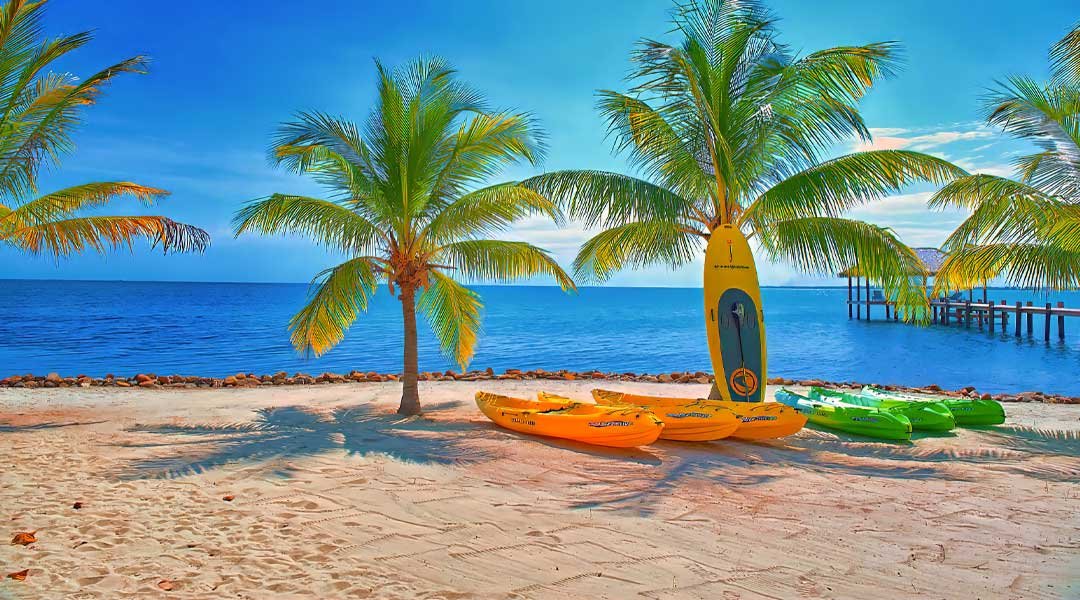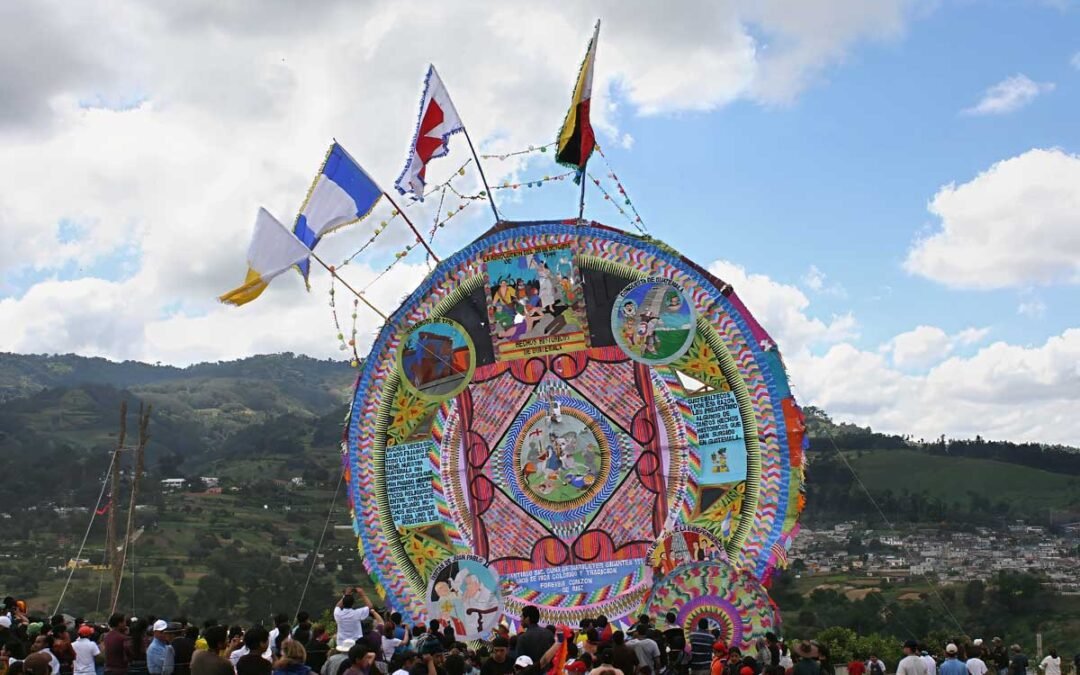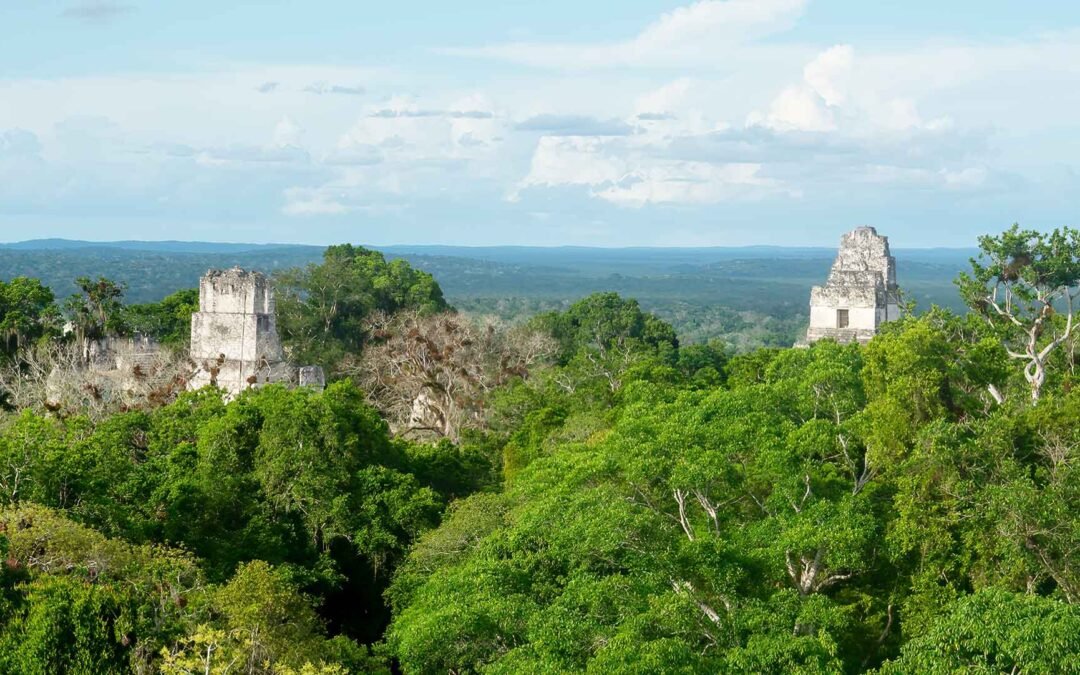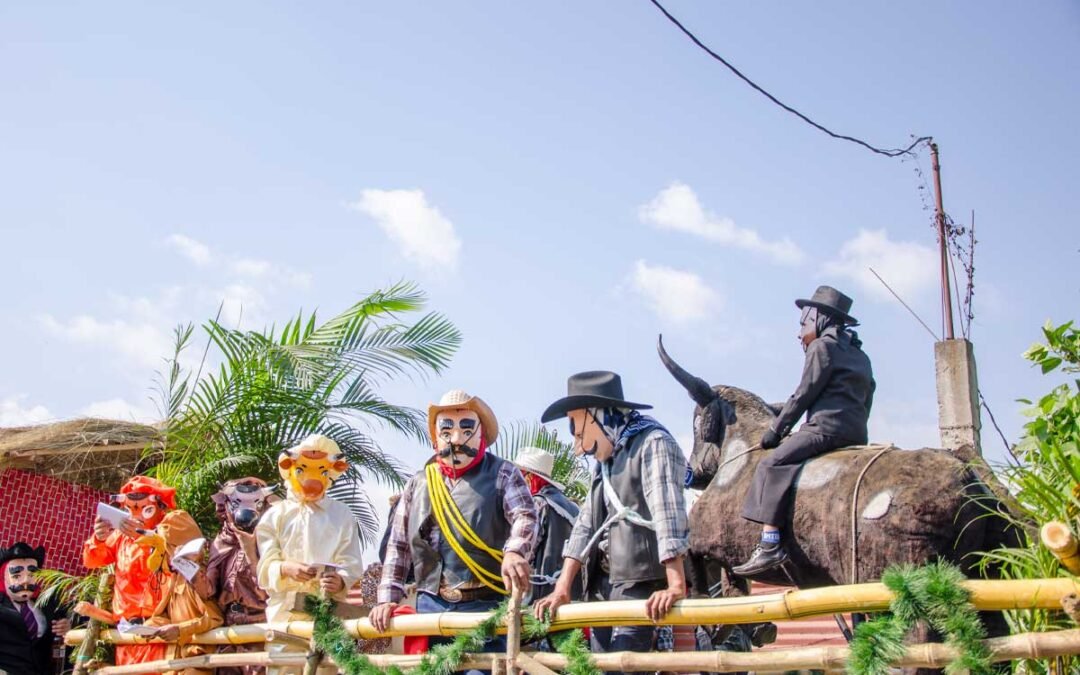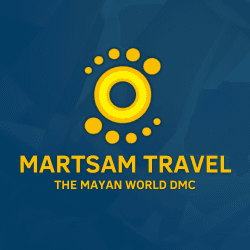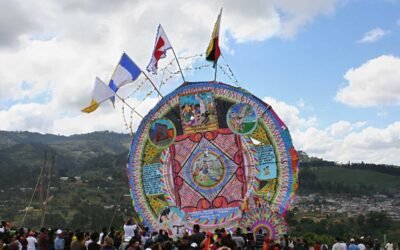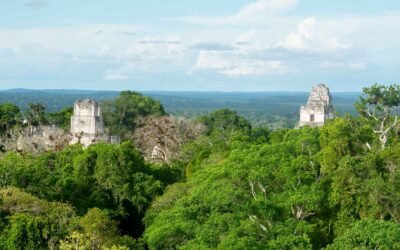Key Takeaways
- The Chichicastenango Fair, Guatemala’s most famous annual festival, combines Maya and Catholic elements in a rich cultural and spiritual display. Anticipate processions, folk dances, and substantial market days with locals and visitors.
- Cultural continuity is at the heart of it as elders and youth alike participate, maintaining their Maya K’iche tradition with traditional dress, music, dance, and storytelling. The fair is a living museum linking Pre-Colombian practices to colonial influences.
- The heart of this event is the Santo Tomás church, where Maya priests and cofradías conduct rituals with copal incense, flowers, and processions. Visitors would do well to be silent observers, to avoid flash, and to ask permission before photographing any people or rituals.
- Market trade fuels local economies. Textiles, masks, pottery, and fresh produce provide income for artisans and family members. Shop intentionally. Ask about symbolism, pay generously after courteous haggling, and purchase straight from artisans.
- Go on Thursdays or Sundays with mid-December in full swing for the fiesta de Santo Tomás. Come early, dress in cozy layers for the highland weather, keep your valuables secure in the crowds, and perhaps take a guided market tour for context and navigation.
- Top sights are Santo Tomás church, cofradías and processions, the vibrant cemetery hill, and the regional museum. Taste local dishes such as tamales, tortillas, and chicharrón, and count on shuttles or tours from Antigua or Guatemala City for dependable transport.
Chichicastenango Fair is an annual market and religious festival in Chichicastenango, Guatemala, famous for its fusion of Maya K’iche’ and Catholic rites, craft trade, and street processions.
Celebrated every December 13 to 21, it pays tribute to Santo Tomás with dances, cofradía rites, and fireworks. Merchants offer handwoven blankets, masks, incense, and produce. Skill and demand determine prices.
Thinking about a visit? Keep in mind crowd peaks, altitude near 2,000 meters, and early market hours that define each day’s course.
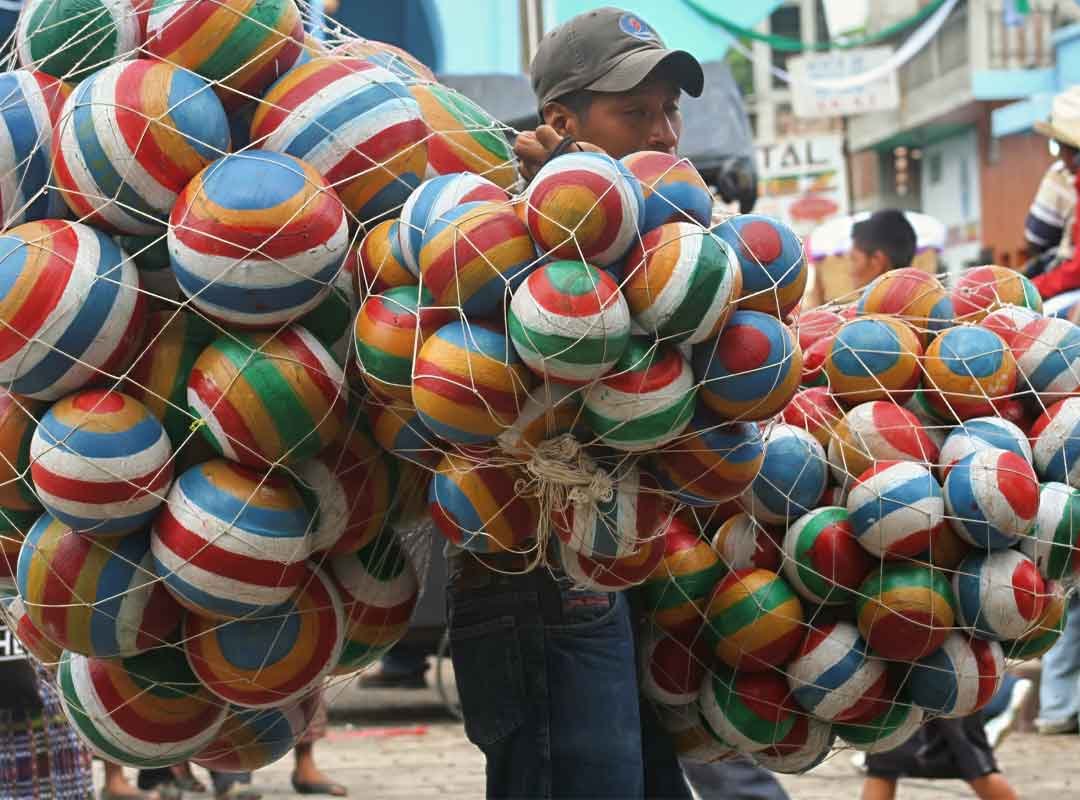
What is the Chichicastenango Fair?
Guatemala’s most celebrated yearly fair, the Fiesta de Santo Tomás, takes place in the vibrant town of Chichicastenango, a key hub of Guatemalan culture. This festival beautifully fuses Mayan and Catholic customs, attracting locals and tourists alike, and transforms market days into lively folkloric dances and traditional Maya rituals.
1. A Cultural Heartbeat
At the heart of the town’s calendar, the fair brings together Maya K’iche’ families and visitors from throughout Guatemala and beyond. Streets become living theaters where elders direct, young actors act, and visitors observe.
Dresses speak. There are handwoven huipiles, vibrant cortes, and embroidered belts, each design connected to location and family. Marimba bands keep the beat, and the Torito Dance and acrobatic Palo Volador ritual draw the crowds to plazas and church steps.
They join as a family, dad, mom, grandma, grandpa, and the little ones. Grandparents impart dances and tunes. Children with flower bundles or drums. In this loop, identity remains firm.
Culture is not a setting here; it’s the focus. The fair maintains the language, craft, and ceremonial arts that give the Maya community its identity.
2. A Spiritual Crossroads
Faith life comes together at Santo Tomás church, where Mayan rites and Catholic liturgy collide openly. Pilgrims come to the Festival of Santo Tomás to pay homage to their patron saint and maintain their ancestors’ traditions.
Maya priests and cofradías conduct sacred rituals of healing, gratitude, and protection. Copal curls incense over steps, flower offerings adorn altars, and processions snake streets with candles, saints, and flutes. Others arrive to reaffirm vows, receive direction, or commemorate family events.
3. A Living History
The Chichicastenango Fair connects pre-Columbian practice with Spanish colonial strata to see and feel. Ceremonies continue on the original Maya stone steps of the Iglesia de Santo Tomás, making the staircase into a sacred axis.
Legend leaks from looms and patios. Elders share origin stories, ancient fairs, and saints’ miracles, while dancers interpret masks and symbols. Stories go from hand to hand, and the chain remains unbroken.
4. An Economic Engine
Here, too, is a market that circulates money and work. Local artisans, traders, and food vendors count on the fair’s traffic.
The stalls overflow with textiles, jewelry, ceramics, masks, woodcarvings, and fresh produce. Hotels, restaurants, and guides report the highest demand, particularly on Thursday and Sunday, when mornings are best for shopping and afternoons lean toward dances and parades. This revenue supports families and sustains artisan trades throughout the year.
5. A Sensory Overload
Color floods the streets: woven reds, indigo threads, flower piles, painted masks, and hand-thrown pots. Drums, marimba, and loudspeakers mingle with fireworks that pop after dusk.
There are stands along alleys with tamales, fresh tortillas, atoles, and grilled meats. Fruits are sold by the kilo. The market seems thronged and sunny, a labyrinth of wares and welcomes.
Bring a camera. The scenes change fast and reward a steady eye.
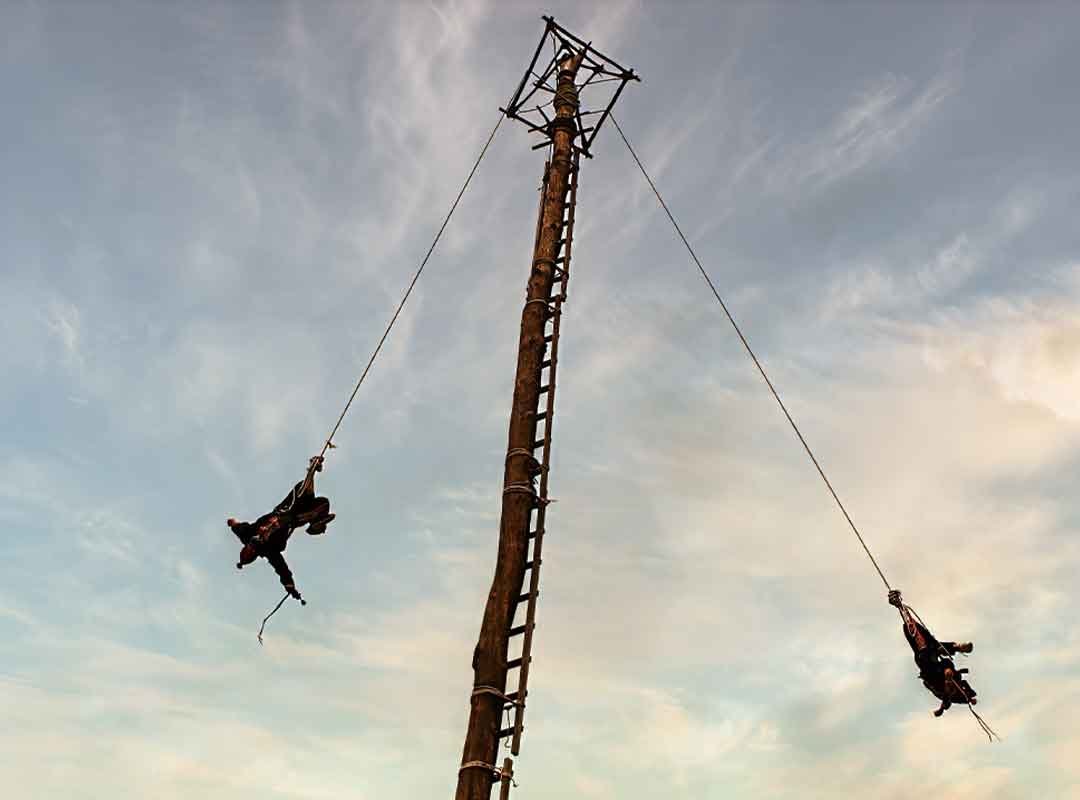
Beyond the Souvenirs
Look behind price tags and impulse buys. It’s a living bazaar, a labor market, and an oral history all molded by the K’iche’ Mayan people. You get everyday life unfolding before you with farmers transporting corn, families bartering, and children braiding twine against a backdrop of visitors and contemporary products.
The town carries deep roots: the 18 steps of the old Maya temple survive, the church blends Maya and Catholic rites, and the hillside cemetery shines in bright paint. Venture down side streets and alleys to get the full spectrum of sounds, smells, and craft.
- Seek out handwoven huipiles, backstrap-loom table runners, jaspe (ikat) shawls, dance masks (baile del torito, conquistador, animal forms), burnished clay pots, slip-painted bowls, incense burners, natural-dye textiles, and gourd rattles.
The Weavers
Women at backstrap looms tied to door frames weave line by line. Threads extend two to three meters, and pacing is regular. Many employ cotton or wool with natural dyes from plants and cochineal.
Patterns mean something. Toes can talk to water, diamonds can call out the universe, zigzags can point out mountains, and color bands can string a piece to a town’s identity. Reds and blues commonly mapped out ancestry and ceremonial responsibilities.
Go wild when you see a demo. Inquire after a motif’s appellation, if the yarn is natural dyed, and the time invested in a panel. Makers will detail warp counts, brocade picks, and how a huipil can take weeks.
Buy direct if possible. Real huipiles and table runners were more than factory cloth, and the money went to the family that had woven them.
The Mask Makers
Woodcarvers carve pine blocks into faces for dances like baile del torito, then sand, gesso, and paint them by hand. Others embellish with gold leaf or tin highlights. Tool marks and weight tell you it is not plastic.
Masks connect religion and celebration. They attend to religious ceremonies, civic parades, and theatrical performances. Conquistador masks reveal the colonial layer. Animal masks indicate ancient religiosity.
See an artisan carve eye slits or paint teeth. Inquire about character roles, what a bull or jaguar stands for, and how a mask wears after many dances.
Collectors carry the masks for the town’s cultural mix. Pick one with defined brush strokes, symmetrical vent holes, and a tight strap.
The Potters
Clay artisans spin bowls, comales, and incense burners, baking them in rudimentary kilns. Many mimic ancient Maya shapes found in museums, only scaled for the home.
Pecked paint on pots, burnishing, slip painting, and mineral or plant pigments. Check stalls. Request to view the firing stack and their method for controlling heat with wood and shards.
Seek out motifs such as stepped frets, stylized birds, and maize. Authentic artifacts are heavy, resonate when tapped, and retain a faint kiln blush.
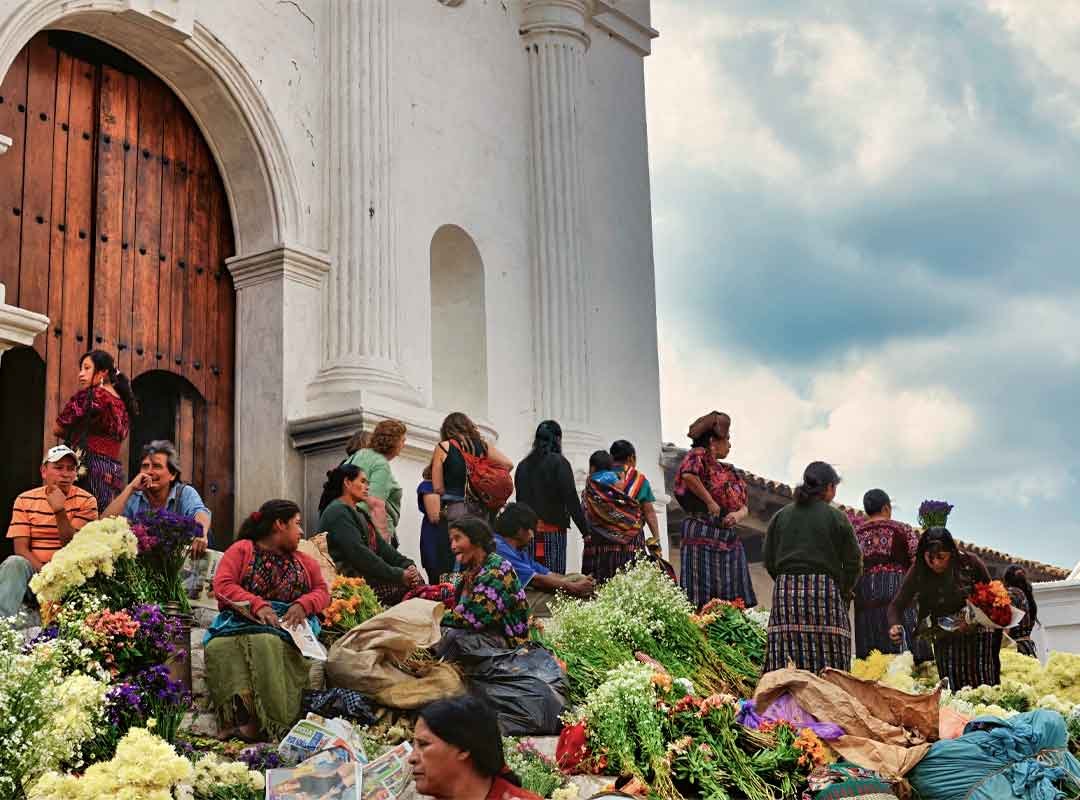
Navigating the Chichicastenango Market
The market in Chichicastenango spills out onto central streets and squares, partially sheltered by corrugated tin roofs, offering a vibrant glimpse into Guatemalan culture with crowded walkways, bright hues, and a labyrinth of booths peddling traditional Guatemalan dishes and handicrafts.
- Checklist for efficient navigation:
- Mark key landmarks: Santo Tomás church and Capilla del Calvario.
- Map zones: textiles near central plazas, food halls by the market hall, animal market on 7a Calle, west side, downhill toward the cemetery.
- Get there early, bring small quetzales, and hold onto your phone and wallet tightly.
- Strut on crowded walkways and sidestep to peruse.
- Take a guided market tour to get background on Maya textiles, symbolism, and pricing etiquette.
- Note rainy season (May–October): bring a rain jacket because the streets turn muddy by afternoon.
- Follow rivers of shoppers to find the indoor fruit and vegetable aisles.
When to Go
Thursdays and Sundays were the main market days, with the most complete selection of goods, ranging from hand-woven huipiles and fine leather belts to ceramics, tools, toys, and great mounds of fruit and vegetables.
It becomes congested, so early morning offers cooler aisles and the prime pickings ahead of the noon pressure—peak crowds at the Fiesta de Santo Tomás in mid-December.
Processions and dances enrich the cultural experience and make it slow going through narrow lanes. Verify dates on the local calendar since special events can alter stall configurations and accessibility.
What to Wear
Glide effortlessly over cobblestones, wet patches, and uneven steps. Wear sturdy, closed-toe shoes.
Wear layers because mountain weather shifts from cool mornings to warm mid-day and then a chill again in late afternoon. Select modest attire, particularly if you plan on going inside churches or walking by sacred areas where ceremonies take place.
In the wet season, bring a lightweight rain jacket. During dry spells, a brimmed hat and sunscreen go a long way.
How to Bargain
Bargaining is expected. Start with a ‘Hola’, ask the price, counter at about half, and work toward a reasonable middle, especially for textiles and leather.
Maintain a warm, respectful tone. A smile goes a long way. Bring small quetzales to pay exact prices and seal deals quickly.
If it isn’t right, thank them and continue.
Photo Etiquette
Request permission for people shots, particularly for Maya ladies in their customary costumes. Give a little tip or purchase something if you shoot a portrait.
It respects time and art—no flash in churches and during sacred rites. Stay discreet.
Step back, use natural light, and frame scenes without blocking pathways or interrupting sales.
Key Sights Within the Fair
A thick core of ritual, trade, and living heritage emanates from the market streets of Chichicastenango, especially during the famous festival events. Crowds swell on Thursdays and Sundays when vendors and pilgrims crowd the lanes, celebrating traditional Maya rituals.
- Santo Tomás Church and Capilla del Calvario
- Cofradía processions and saint-carrying rites
- Cemetery Hill viewpoints and memorial customs
- Market corridors: textiles, ceramics, produce, and small museums
- Chichicastenango Regional Museum for context
Santo Tomás Church
Santo Tomás, the spiritual center of the fair, is where Maya and Catholicism converge in daily life. The 18 original stone steps before the facade correspond to the 18 months of the Maya calendar, and folks continue to use them as ritual platforms.
On market days, incense smoke floats over flower offerings and pine needles. Merchants arrange hand-woven fabrics and painted pottery within eyeshot of prayer. Inside, the centuries-old church contains Maya stone altars down the nave, a rare point of intersection that remains alive, not merely symbolic.
Stand close to the steps and witness incense-burning ceremonies and the delicate arranging of marigolds or roses. Enter, hush, no flash, along the side aisles. Across the plaza, the smaller white Capilla del Calvario anchors parallel devotions, often with candles and soft chants.
The Cofradías
Cofradías, or religious brotherhoods, organize processions, protect saint images, and manage ritual cycles associated with the farming calendar and feast days. Their labor directs the fair’s consecrated heart from church to street and back.
At the festival, members don folk costumes, hoist embroidered flags, and parade with drummers and flutes. Observe the delicate raising of saint statues onto wooden platforms and the intermittent step-and-pause pace as bearers pause, then press ahead through the crowd.
These communities maintain both Maya reciprocity structures and Catholic liturgy; thus, what you observe is continuity, not mere spectacle.
The Cemetery Hill
The cemetery hill is one of Guatemala’s most colorful sights, a slope of bright tombs and family shrines. It has the air of celebration, but it’s still a cemetery. You see crosses, candles, and fresh paint next to copal and flowers laid out in Maya patterns, a definite fusion of Christian and Maya symbols.
Visit at sunrise for gentle illumination of pastel monuments or sunset for extended shadows and sprawling town panoramas. Tread carefully and step aside for the clans hindering altars or photo-bombing ceremonies.
Beyond rites, the fair itself is immense. Stalls hawk hand-woven huipiles, beaded jewelry, wooden toys, and exquisitely painted ceramics. The indoor produce hall boasts kilo-stacks of fruit and vegetables.
When the crowds become thick, duck into the Chichicastenango Regional Museum or tiny local museums for nicely captioned fabrics, ceramics, and old books to frame what you’re viewing outside.
Tasting the Local Flavors
Eating is a big part of the Chichicastenango Fair, and the market is among the best places in Guatemala to find out what people eat daily. Vendors lay their wares and grill out in pride – taste the flavors of Guatemala. The market stalls explode with vibrancy and freshness, and the air is filled with the aroma of corn masa, carne asada, and hearty stews.
A stroll down the stalls displays local dress and everyday shopping habits, so you come in contact with local people as you dine. Purchasing food here sustains farmers and small vendors and connects you immediately to the area’s food culture. Street food fair food is both sensible and steeped in heritage. The food stalls tempt guests to savor traditional cuisine, lovingly cooked using hereditary techniques.
Corn is at the core of many staples. Fresh tortillas, hot off the comal, go with everything. Tamales have steamed masa and chicken, vegetable, or black bean fillings. Chicharrón provides crunch, sold by the pound and frequently consumed with curtido, an uncomplicated cabbage slaw. On market days, many arrive for guilty pleasures not available in their home villages, like neon-colored candy and salty, crispy fried chicken sold in hearty chunks.
Anticipate fast food, cheap prices in Guatemalan quetzales (GTQ), and serving sizes designed for splitting. The fair is the perfect place to sample local and regional favorites that represent the melting pot of cultures folks bring to market. Pupusas — a stuffed flatbread most famous in El Salvador — are prevalent here. Cheese, beans, or chicharrón paste are stuffed into the dough and pan-griddled, then served with tomato sauce and curtido.
We notice fried chicken stands attract consistent lines. Comedores — little market restaurants — offer set lunches with soup, a main dish such as pepián, which is a spicy stew, rice, tortillas, and a beverage. These provide a delicious, wholesome, home-cooked flavor at a reasonable price and assist you in tasting what the locals chow down on an average day. Vendors are glad to talk about ingredients; pointing and basic Spanish will go a long way.
Traditional Guatemalan dishes to sample:
- Tamales (corn masa, steamed, savory fillings)
- Chicharrón (crispy pork, often with slaw)
- Fresh corn tortillas (hand-pressed, hot from the griddle)
- Pupusas (stuffed flatbread with cheese or beans)
- Fried chicken (market-day favorite, crunchy and salty)
There’s more to wandering around the bustling market than grub. There are textiles, handicrafts, and farm-fresh goods from local farms, with your shopping supporting local artisans, and you tasting Guatemalan flavors. Visitors can indulge in local bites and sample genuine flavors at every stall.
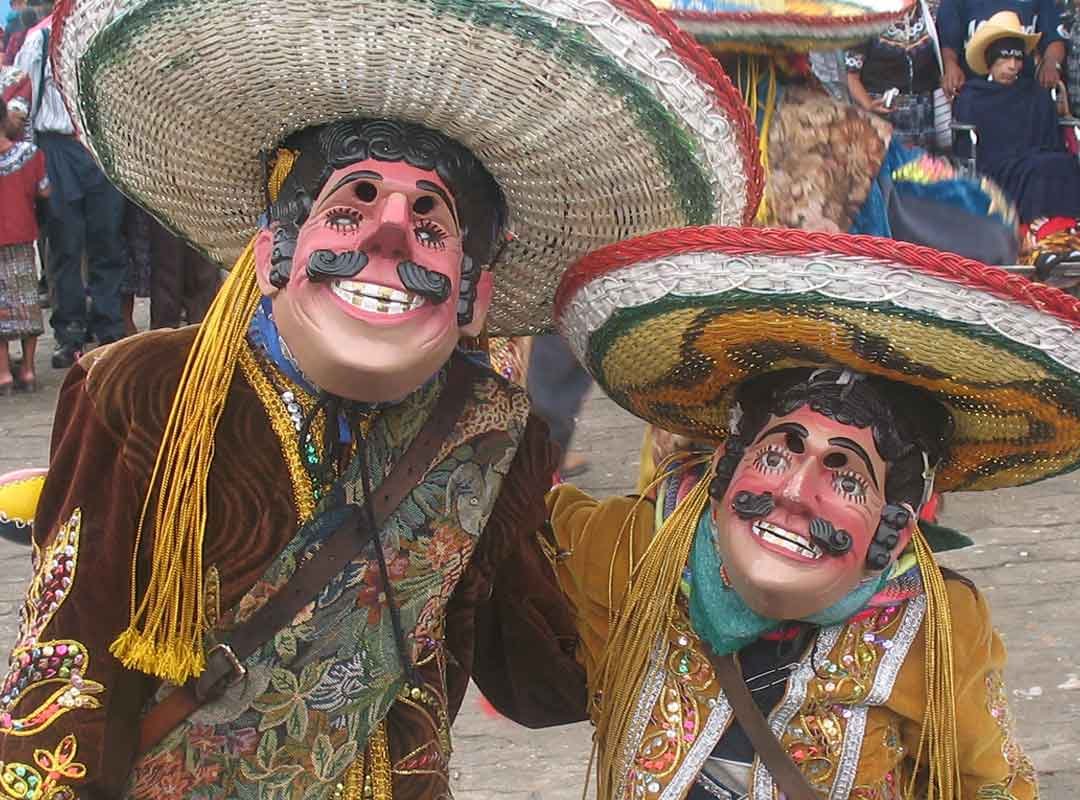
How to Reach Chichicastenango
Chichicastenango, a vibrant market town in Guatemala’s western highlands, is easily accessible via mountain roads, making it an ideal choice for travelers seeking a unique Guatemala experience.
From Antigua or Guatemala City: buses, shuttles, and private tours
Chicken buses operate daily and are the cheapest. There should be connections along the way in towns like Los Encuentros and a total travel time of three to five hours from Guatemala City and around three to four hours from Antigua, depending on traffic and stops.
These are crowded, quick, and crude, but they whisk you there on market days with no muss. Tourist shuttles provide a convenient, direct ride, scheduled hostel or hotel pick-ups, assigned seats, and room for luggage. They take about the same time but have fewer stops and more definite schedules.
Private tours or a private driver are more expensive but save time and take care of all logistics, which is handy if you travel in a small group or with gear. In all instances, get there early on market days to avoid the noon crawl in and around town.
Day tour or overnight: plan for what you want to see
A day tour is fine if you’re looking for a guided tour of the market, church steps, and cemetery in the vicinity. It slashes the planning and frequently comes with a local guide.
For a more immersive experience, spend a night in town at one of the local hotels. Wander the streets at dawn when the vendors are setting up, visit the church before the crowds, and grab space to rest and stash finds.
Overnights assist if your return path relies on shuttle schedules or if you intend side excursions.
Time your visit: market days and Fiesta de Santo Tomás
Market days, Thursday and Sunday, are when the town is alive. Vendors peddle textiles, masks, flowers, and produce, and ceremonies might be conducted on the church steps.
With traditional dances and the palo volador ritual, the mid-December Fiesta de Santo Tomás attracts huge crowds, and hotels book up weeks in advance. Book transport and rooms early for market days and festival week!
Use Chichicastenango as a base for nearby sights.
Lake Atitlán is to the south, and Quetzaltenango (Xela) is to the west. From Lake Atitlán, get to Panajachel first. If you’re based in a lakeside village, you can catch a water taxi to Panajachel.
The boat journey lasts roughly 30 to 40 minutes and costs 25 Q per person each way. The bus from Panajachel takes about 40 minutes and costs 3 to 5 Q from Panajachel, and it will stop to pick up riders en route.
You can reserve a shuttle or tour bus from Lake Atitlán for a straight shot. If public transport seems complicated, a private shuttle or taxi will deliver you directly to town.
Stay in Chichicastenango for a night or two, then continue to Atitlán or Xela with early morning departures to avoid the traffic.
Conclusion
To conclude, the Chichicastenango Fair provides true insight, living rites, brash color, pure craft, street food that hits the spot, and reasonable prices if you inquire with caution. A couple of hours captures the vibe. There is soul in a full day.
For a plan that works: reach town by mid-morning. Stroll the church steps. View the mask stalls down the main thoroughfares. Give a hot atol a whirl. Buy a little, then one crucial piece. Carry cash in small bills—travel light. Be alert on cramped streets. Pause in the plaza to reset.
Ready to roll it into reality? Chart your course, establish a reasonable, fair budget, and choose a dry season date. Reserve your run, then experience it!
Frequently Asked Questions (FAQs)
When is the Chichicastenango Fair held?
The principal fair, a vibrant cultural celebration, pays tribute to Santo Tomás from approximately 13 to 21 December, coinciding with the famous festival events. Sundays and Thursdays showcase the renowned Chichicastenango market, attracting Guatemalans even during the off-season.
What can I expect at the Chichicastenango Market?
Think colorful fabrics, artisan goods, flowers, incense, and fresh fruits at the famous festival in Chichicastenango. You will witness Guatemalan culture and Catholic traditions intertwining, particularly around Santo Tomás Church.
Is the fair safe for travelers?
Yes, with usual caveats. Protect your valuables, take registered guides, and stay aware in crowds, especially during the vibrant festivities in Chichicastenango. Main streets are especially busy at night. Respect local traditions and inquire before photographing the colorful events.
How do I get to Chichicastenango?
From Guatemala City or Antigua, it’s a shuttle or chicken bus to Chichi, a vibrant town in the highlands, via Panajachel or Los Encuentros. The journey to this crucial Guatemalan landmark takes roughly two and a half to four hours, depending on traffic.
What are the must-see sights during the fair?
Don’t miss the Santo Tomás Church and the colorful festivities at the Pascual Abaj shrine, where you can watch traditional dances and processions, showcasing the rich Guatemalan culture.
od.
What local foods should I try?
Taste the flavors of pepián, kak’ik, tamales, and atol drinks. Street stalls sell fresh tortillas and grilled meats. Select vendors who are bustling with freshness and inquire about spiciness.
How can I bargain respectfully in the market?
Begin with a salutation at the vibrant Chichicastenango market, a hub of Guatemalan culture. Give a fair counterprice, typically 10 to 30 percent below, while enjoying the colorful festivities.


